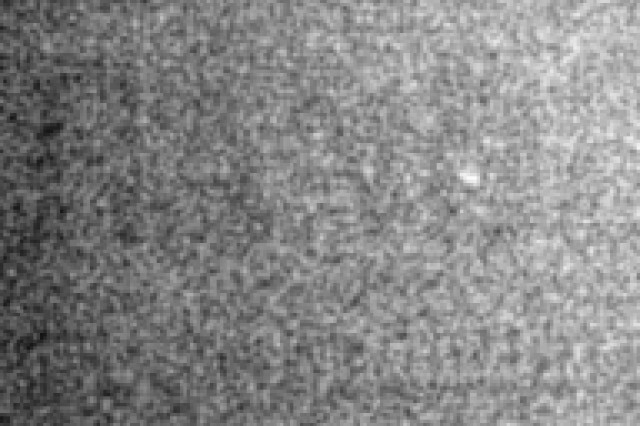
Body armor plates used in an AI challenge aimed at improving defect analysis of Soldier body armor plates.
View original
ABERDEEN PROVING GROUND, Md. – The U.S. Army Test and Evaluation Command recognized the winners of the second annual ATEC AI Challenge at the third annual ATEC Data Summit on Sept. 17.
The purpose of this challenge was to invite ATEC employees to have the opportunity to solve real-world problems using AI and machine learning solutions with a high potential return on investment. Additionally, ATEC sought to learn how to validate testing and evaluation procedures for AI-enabled systems by evaluating challenge submissions and determining winners. ATEC will then apply these lessons to improve how materials systems are tested and evaluated, incorporating AI and machine learning.
This year’s AI Challenge focused on how to improve defect analysis of soldiers’ armor plating. This is currently done manually by an analyst who examines the X-ray images. By leveraging AI algorithms, ATEC recognized the potential to dramatically speed up this process and give analysts more time to investigate the root causes of identified defects.

X-ray image patch used in competitions. There is a flaw in the image, visible as a spot in the X-ray image of the bulletproof vest shown in Figure 1. The purpose of the AI was to determine whether every X-ray image taken was defective.
View original

X-ray image patch used in competitions. There is a flaw in the image, visible as a spot in the X-ray image of the bulletproof vest shown in Figure 1. The purpose of the AI was to determine whether every X-ray image taken was defective.
View original

X-ray image patch used in competitions. There is a flaw in the image, visible as a spot in the X-ray image of the bulletproof vest shown in Figure 1. The purpose of the AI was to determine whether every X-ray image taken was defective.
View original
Ultimately, 29 teams and 153 participants from across the Department of Defense acquisition community participated in the competition to develop solutions. The team’s judging criteria were based on scoring criteria that focused on finding flaws in all bulletproof vests. This year’s winner was the U.S. Army Aberdeen Test Center’s “No To Destructive Testing” team.
Steven Shrewsbury, a mechanical engineer and one of five members of the winning team, described his winning competition entry.
“We looked at different AI models and ultimately chose Vision Transformer, which is a state-of-the-art model for image analysis,” he said.
Utilizing data mesh
“The AI Challenge demonstrated ATEC’s ability to use ATEC’s data to solve its own problems,” said the Military Analytical, Artificial Intelligence, and Digital Engineering Directorate within the U.S. Army Evaluation Center, a subsidiary of ATEC. said evaluator Maj. David Nibrick. “Teams across the acquisition community have leveraged the ATEC Data Mesh to provide a highly common computing environment for learning and practicing AI skills. This has resulted in significant time and cost savings for ATEC. Now you can deploy it in a production environment.”
Niblick said ATEC Datamesh is a cloud-based infrastructure that stores all of ATEC’s test and evaluation data. The data mesh unifies ATEC under a single IT umbrella and includes the latest tools and infrastructure to enable digital transformation.
However, he noted, “Ultimately ATEC relies on champions to push for the adoption of more efficient and effective methodologies.” “An incredible example of the integration of champions and infrastructure is the 2024 AI Challenge.”
Notably, this year’s contest saw significant growth from the 2023 contest, which focused on improving acoustic sensor data analysis for ammunition testing at Yuma Proving Ground (YPG). The winning solution is currently being used by the YPG and will save the Army hundreds of man-hours of work.
This tournament was only open to AAIDED, and as a result, only three teams participated. However, by using Data Mesh’s cloud-based infrastructure, AAIDED was able to expand the competition into a Department of Defense-wide effort in 2024.
supportive environment
Now in its third year, the ATEC Data Summit has proven to be the perfect venue to recognize the winners. The Data Summit is an opportunity for engineers and scientists to come together for collaboration, sharing ideas, and dialogue about advancing digital transformation within ATEC and across the Army. They are the brainchild of Brian Kelly, ATEC’s Chief Data Analytics Officer, who had a vision to digitally transform ATEC’s test and evaluation community.
Young Bunn, principal assistant secretary for Army Acquisition, Logistics and Technology (ASA(AL&T)), presented awards to this year’s winning teams, along with James Amato, ATEC’s executive technical director.
Mr. Bang concluded by congratulating the team and stating ASA(AL&T)’s intention to partner with ATEC to expand the AI Challenge to a wider range of participants and problem sets in the future.
